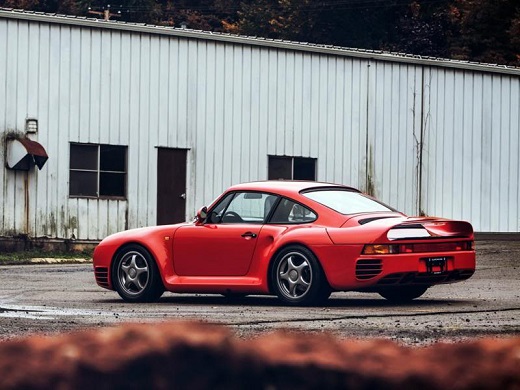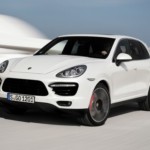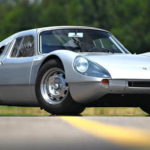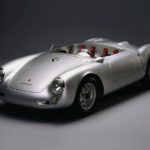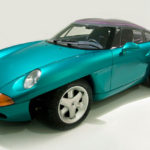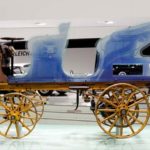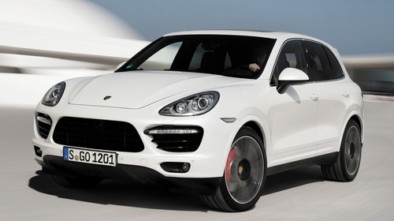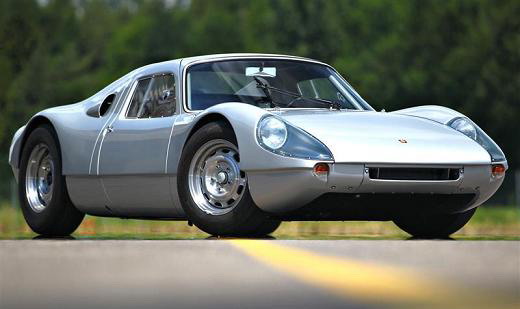Porsche 959 1986 - 1988 and 1992 - 1993 - Model history
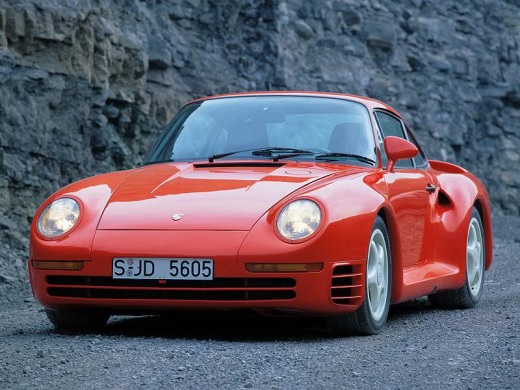
Porsche 959
In terms of technical solutions and performance, the Porsche 959 was far ahead of its time and competition. In order to understand the philosophy behind this car, one must first understand the philosophy behind the work of the Porsche parent company. Unlike some other manufacturers, Porsche's primary goal in creating the 959 was not dry performance. Usability, reliability and operational safety have generally received more attention in Porsche than figures such as acceleration and top speed. The Porsche 959 was conceived as a test ground for new technologies - all-wheel drive, engines, materials, aerodynamics, and was not created as a conventional new model, but as a trial ground for the future. Funding was not a problem and the designers practically had their hands fixed, with the idea that in the future the solutions developed on the 959 model would be implemented on upcoming game models. The basis of the 959's chassis came from a modification of the 911, but the wheel track was extended. The engine is originally from the competition model 962, and all-wheel drive was developed specifically for this model. The first prototype was introduced in 1983 and named Gruppe B after the famous rally car class. Porsche designed this model with the intention of meeting the standards prescribed by the regulations for this class. The final version was introduced in 1985.
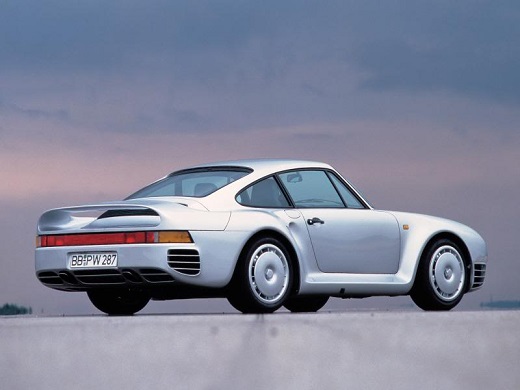
Porsche 959
After a year, the latest problems with the all-wheel drive system were solved and in 1986 the final version was presented, and the following year the first copy was delivered, to the youngest son of Ferdinand Porsche, the founder of the Porsche brand. It is interesting to note that due to the complexity of the whole vehicle, the development was quite financially demanding, so the 959 was very expensive and cost around 420,000 DM (while the Lamborghini Countach was selling for roughly twice the price), but even more interesting is the Porsche each car cost more than double the price at which it was sold! Thus, with each of the 230 (by some estimates, 288) specimens sold, Porsche lost a hefty sum, but this was not crucial, as this model was not aimed at commercial success but was used as an indicator of technological superiority. An example of this in the recent past was the Bugatti Veyron. The Porsche 959 has a self-supporting body, the base of which relies on the sister 911. The steel monocoque is essentially very similar in both models (with a difference in the transmission tunnel). This solution did not follow the trend set by other exotic cars of the time, such as Lamborghini Countach, many models Ferrari even by the 959s, other manufacturers used tubular space frames as the basis of vehicle structure. Specifically, Porsche wanted the XNUMX's developed solutions to be usable in the future on its other models, and the tubular frame was not on the agenda.
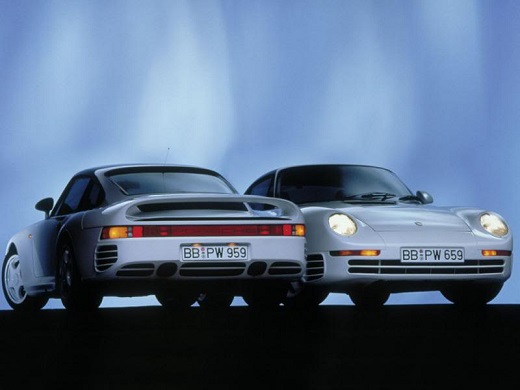
Porsche 959
Due to the steel base, the weight savings had to be found elsewhere, and therefore the body panels were made of lightweight materials. According to information from the factory, about half of the dry mass of the vehicle was made of steel. The doors and front hood are made of aluminum, the front bumper is made of polyurethane, and the rest of the body is made of fiberglass reinforced kevlar (kevlar is the material used to make bulletproof vests and fuel tanks for Formula 1). The floor of the vehicle was flat thanks to the formwork. There was a large arch spoiler on the bonnet. The body of the 959 was similar in shape to the 911, with numerous improvements contributing to aerodynamic efficiency with an air drag coefficient of only 0,31, which was a great help in reaching maximum speed, but because of that the aerodynamic pressure was not of sufficient intensity to assist the grip during rapid passes through curves. The wheelbase was identical to that of 911, the width was slightly larger to accommodate wider wheels, and some body elements were identical to those of 911. Magnesium rims with hollow webs, and with central fixation by a single screw, were 17 in diameter. inch. The tires (instead of the originally planned Dunlop) Bridgestone RE71, specially developed for this model, are 235/45 front and 255/40 back. Interestingly, the 959 was fitted with a tire pressure monitoring system, and the tires were capable of traveling more than 50 km without pressure in them. The 959 engine was 2,849 cm3 in size and was developed from the engine running the competing 956 and 962 models.
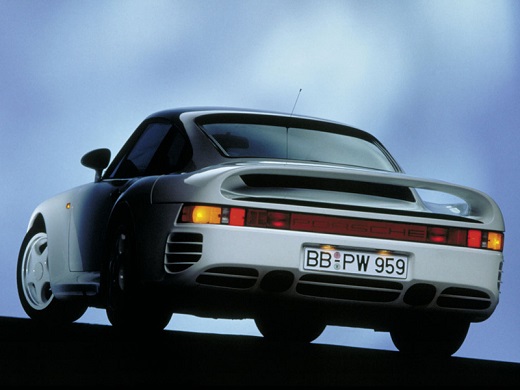
Porsche 959
The engine head was liquid-cooled due to the increased thermal load caused by overfilling, and the rest of the engine was air-cooled, similar to other Porsche boxer engines of the time. The heads and block of the engine are made of aluminum, the pistons are forged aluminum, the piston rod is made of titanium. The main engines were four valves per cylinder, with two camshafts in each head, lubricated with a dry sump. The engine was filled with two turbochargers and fitted with an intercooler. Interestingly, the turbochargers were sequentially coupled. This means that up to 4,000 rpm of the crankshaft, only one turbocharger was active, contributing to better throttle response. At higher speeds, a second turbocharger was also activated, supplying the engine with sufficient fresh air. The filling pressure was up to 0,9 bar. Maximum engine power was 450 hp at 6,500 rpm, maximum torque of 500 Nm was available at 5,500 rpm. Due to sequential turbocharging, 400 Nm of torque was already available at 2,500 rpm. The gearbox was six degrees, unlike the five-speed at 911, but the sixth gear was actually very short (off-road), shorter than the first gear. The Porsche 959 was particularly advanced in terms of integral drive. The front axle was driven by a multi-lamella wet coupling. The pressure of the oil exerted different pressure on the coupling elements, thus obtaining different torque on the front wheels depending on the need, and also avoided the need for a conventional center differential.
In mud and snow mode, the front multi-blade clutch and the rear differential lock are set to work without slipping, giving maximum traction. In ice mode, the torque is divided 50:50 between the front and rear axles, while in wet mode the torque is divided 40:60. A special feature of this transmission system, better known by the abbreviation PSK (Porsche-Steuer Kupplung), is the possibility of continuously changing the torque ratio on the axles over time, but not only in conditions when one of the wheels slips (as other systems did). Under normal conditions, the torque distribution was 40:60 in favor of the rear axle, and the mass distribution by axles was the same. During sharp acceleration up to 80% of the torque was taken over by the rear axle due to mass transfer. The system was controlled by a computer using various parameters such as: wheel speed, accelerator pedal position, steering angle, acceleration, filling pressure… The suspension was independent on all wheels, with double triangular arms and two shock absorbers on each wheel. One shock absorber was used to adjust the distance from the ground, while the other had the possibility of controlling the stiffness with the help of an electric motor. The Porsche 959 did not have stabilizers, but their role was taken over by shock absorbers. The shock absorbers were computer controlled with three damping modes: hard, soft and automatic. The ground clearance could also be regulated at three levels, and at certain speed thresholds the ground clearance was automatically reduced.
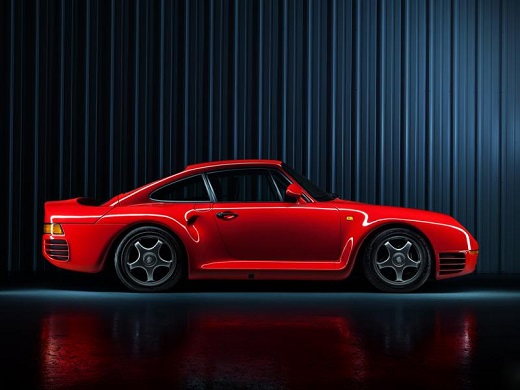
Porsche 959
The vehicles were factory fitted with pre-drilled holes for mounting the suspension at different heights in case of greater distance from the ground. The brakes were all-wheel drive, self-ventilating, and in the Sport version they were perforated. The brake system was equipped with four-channel ABS, with four-piston calipers. The Porsche 959 is offered in two versions: Sport and Comfort. The comfort version was maximally equipped, while the Sport was lightweight, the Spartan version without suspension, adjusting ground clearance and hardness, air conditioning, power windows, central locking, rear seats and even the passenger's rearview mirror. Even with such rigorous savings, the weight was more than 1,500 kg, which exceeded the factory data of 200 kg for the Sport version by about 1,350 kg. The sport version was not popular and was made in far fewer copies than Comfort. The benchmark could be the Lamborghini Countach, which with a significantly larger V12 engine weighed 1,450 kg. However, technology is taking a toll on the mass. Performance was outstanding during this time, and today is not an understatement: acceleration from 0-100 km / h in 3.7 seconds and up to 200 km / h in 13. The maximum measured speed is 317 km / h. These performances at the time secured world records in the class of serial cars. The Porsche 959 was also a successful competitor car, and it was practically developed and made for type approval for the famous Group B rally championship, where it practically did not participate due to the large mass that would be a handicap compared to other manufacturers in that class. However, Porsche found itself at the famous Paris-Dakar Rally, where competition was estimated to be much less powerful.
They took part in 1984 when the first place was won with the 911, which had all-wheel drive from the 959 with some modifications. The following year, three 959s started in the same competition, and all three dropped out due to technical problems. Next, in 1986, the 959 won first place with a car almost identical to the production model in the Sport version. At Le Mans, 959 in the competition 961 version finished seventh in the overall standings and as the first in his group. The Porsche 959 was not a car for everyone, the factory was studying the list of potential customers, so the famous tennis player Boris Becker was dropped from the list. Buyers in the US have never been greeted with a model that complies with local regulations. With its sophisticated and intelligent technology, the Porsche 959 has demonstrated in a single vehicle all the knowledge that has accumulated over the decades of the legendary brand. And from today’s time, it’s nice to remember that technological gem, a revolutionary vehicle, and a great deal of four-wheel innovation. Such ventures in the automotive industry do not happen often.
Author: Hot Tires
Images: Porsche
Retrieved from: www.brzabrzina.com
Recommendation of similar texts:

Hi there, I am Mladen and I am an auto enthusiast. I started this blog years ago to help like minded people share information about latest cars, car servicing ideas, used car info, exotic cars, and auto technology. You will find helpful articles and videos on a wide variety of cars - Audi, Mercedes, Toyota, Porsche, Volvo, BMW and much more. Ping us if you have anything cool to share on latest cars or on how to make older cars more efficient, or just want to say hi!

